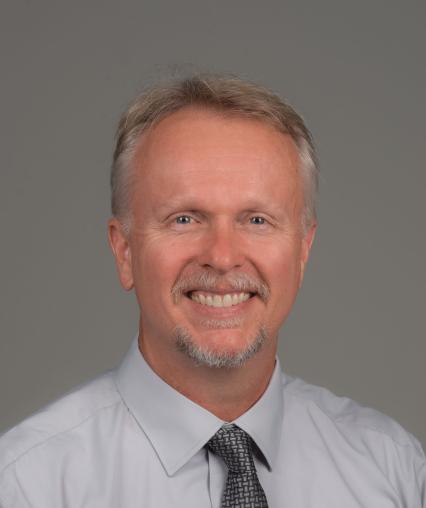
Evan Sveum
Contact Information
Biography
Statement of Teaching Philosophy
I believe that learning is a deeply personal, human experience, shaped by the engagement and commitment of both the educator and the student. As a teacher, I care deeply about the learning process, but I recognize that unless the student also cares, true learning cannot occur. My role is to ignite that spark, guiding students through a journey of discovery, critical thinking, and practical application. An essential part of this is building relationships with my students, which starts with honoring them by learning their names. This simple but purposeful act creates a foundation of trust, enhancing the connection between student and professor, and fostering an environment where learning thrives.
I approach teaching with the understanding that learning is often messy, filled with challenges and setbacks. I emphasize to my students that failure is not the end, but rather the beginning of deeper learning and growth. My teaching philosophy is grounded in the belief that every student has the potential to succeed when provided with the right resources and support. By creating a transparent, inclusive, and interactive learning environment, I aim to meet the diverse needs of my students. My use of hands-on learning and real-world case studies ensures that students not only grasp theoretical concepts but also develop practical skills applicable in professional settings.
In my years of teaching Systems Analysis, Enterprise Technology, and Information Systems, I have continuously refined my curriculum to align with industry needs. My collaborations with business partners have allowed me to integrate cutting-edge tools into my classes, giving students valuable hands-on experence with the technologies they will encounter in the workplace. As an innovator, I am often on the bleeding edge of new practices and technologies. I encourage my students not to fear these innovations, as we are all apt to learn from them. This real-world integration reinforces that learning can be challenging, but it’s through navigating complexities and overcoming obstacles that mastery is achieved.
Diversity, equity, and inclusiveness are central to my teaching approach. I believe that students thrive when they see their identities reflected and respected in the classroom. To that end, I incorporate a range of perspectives in my course materials and design assignments that allow for multiple modes of expression, ensuring that each student can demonstrate their learning in ways that are most effective for them. My goal is to empower students to take ownership of their learning, recognizing that their unique perspectives contribute to the richness of the classroom experience.
As an advocate for technology-enhanced learning, I use tools such as Canvas and various multimedia applications to create engaging online and hybrid courses. I recognize that learning requires flexibility, and my aim is to make education accessible while maintaining high standards of academic rigor. I also emphasize that learning is not linear or always smooth—it is often full of trial and error, which is an essential part of the growth process.
Assessment is a vital tool for both student growth and my own continuous improvement as an educator. I employ a mix of formative and summative assessments, including project-based learning, case studies, and reflective assignments, to gauge students' understanding and provide constructive feedback. I encourage students to view their setbacks as learning opportunities. This process not only measures learning outcomes but also helps students identify their strengths and areas for development. It reinforces my belief that learning is messy, but with persistence, students can overcome obstacles and thrive.
I view teaching as a lifelong learning process. Over the years, I have actively sought opportunities for professional growth, including participating in workshops on educational technology and diversity, attending conferences, and collaborating with colleagues to explore innovative teaching strategies. Just as I encourage my students to embrace failure as a beginning, I model this mindset in my own development, constantly seeking ways to refine and enhance my
teaching.
Summary of Statement of Teaching Philosophy
- Learning is personal and relational – Building trust through purposeful connections, like learning students' names, fosters a better learning environment.
- Student engagement is key – Learning occurs when both the teacher and the student are invested in the process.
- Learning is messy – Setbacks and failures are part of the process and provide opportunities for growth.
- Inclusive and supportive environments – Every student has the potential to succeed when diversity, equity, and inclusiveness are prioritized.
- Real-world integration and innovation – Practical, hands-on learning through real-world case studies and cutting-edge technologies helps students prepare for the professional world. Innovations should not be feared, as there are always opportunities to learn from them.
- Flexible, technology-enhanced learning – Courses should be accessible and engaging, using technology to meet diverse needs while maintaining rigor.
- Continuous assessment and improvement – Formative and summative assessments guide both student progress and the teacher’s ongoing development.
- Lifelong learning and professional growth – Teaching is an evolving practice, requiring continual reflection, adaptation, and willingness to embrace new technologies and ideas.